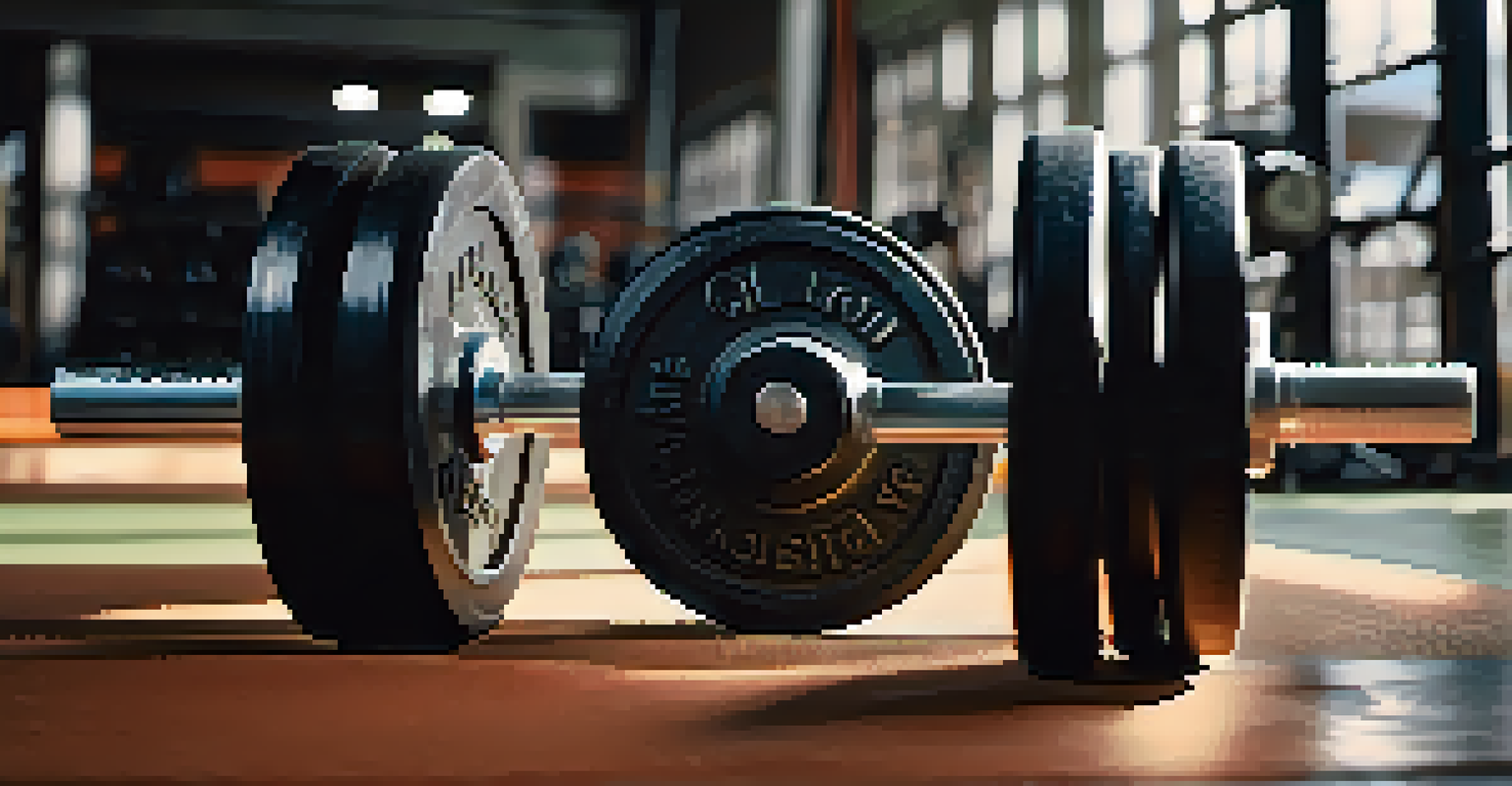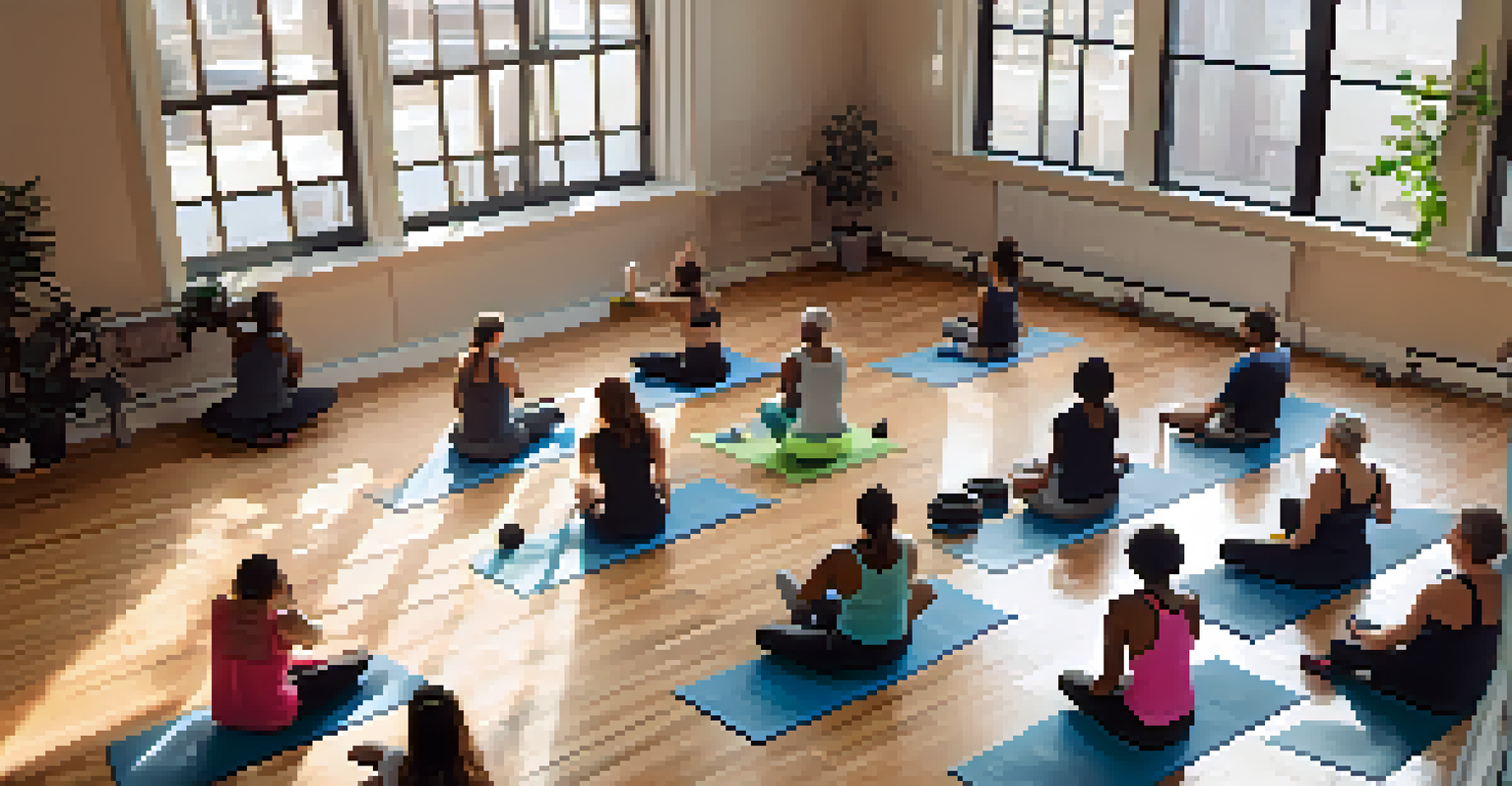Pause Squats: Building Strength in the Most Challenging Position

Understanding Pause Squats: What Are They?
Pause squats are a variation of the traditional squat, where you pause for a few seconds at the bottom of the movement. This technique not only challenges your stability but also forces your muscles to work harder during the ascent. By holding the squat position, you engage your core and lower body in a unique way that enhances strength and control.
Strength does not come from physical capacity. It comes from an indomitable will.
Think of it as a stop sign at the bottom of your squat. Instead of rushing through the movement, you take a moment to breathe and stabilize. This brief pause can make a significant difference in your overall strength development, as it requires you to push from a dead stop, which is more demanding than a regular squat.
Incorporating pause squats into your routine can offer a new layer of challenge and engagement. Whether you're a beginner or an advanced lifter, understanding this exercise can help you unlock new strength potential.
Benefits of Pause Squats for Strength Training
Pause squats come with a wealth of benefits that can elevate your strength training game. One of the most notable advantages is increased muscle activation. When you pause, your muscles are under tension for a longer period, leading to greater hypertrophy, or muscle growth.

Another benefit is improved form and technique. The pause allows you to focus on your body mechanics, ensuring your knees are tracking properly and your back maintains a neutral position. This can help prevent injuries and promote better overall squat performance.
Pause Squats Enhance Strength
Incorporating pause squats into your routine increases muscle activation and promotes hypertrophy.
Lastly, pause squats enhance your mental toughness. By challenging yourself to hold the position, you build resilience and confidence that can carry over into other exercises and workouts. It’s not just about physical strength; it’s about mental fortitude as well.
How to Perform a Pause Squat Correctly
To perform a pause squat, start with your feet shoulder-width apart and your chest up. As you lower into the squat, push your hips back and ensure your knees stay aligned with your toes. Once you reach the bottom position, pause for 2-3 seconds before driving back up to standing.
The pain you feel today will be the strength you feel tomorrow.
During the pause, focus on maintaining tension in your core and engaging your glutes. This will help you stay stable and prepared for the ascent. It’s important to breathe steadily; inhale as you lower down and exhale as you push back up.
Remember, technique is key. If you’re new to pause squats, consider using lighter weights or even just your body weight to master the movement. Once you feel confident, you can gradually add weight to increase the challenge.
Common Mistakes to Avoid with Pause Squats
Like any exercise, pause squats come with their own set of pitfalls. One common mistake is failing to maintain proper form during the pause. It’s essential to keep your back straight and your knees aligned to avoid strain and injury.
Another mistake is rushing through the pause. The purpose of this exercise is to increase time under tension, so take your time during the hold. Avoid the temptation to bounce back up; this can lead to poor technique and diminish the effectiveness of the squat.
Improved Technique and Stability
The pause in pause squats allows for better focus on form, helping to ensure proper body mechanics.
Lastly, some lifters forget to engage their core during the pause. A strong core is crucial for maintaining stability and balance. Focus on tightening your abdominal muscles to support your spine throughout the movement.
Incorporating Pause Squats into Your Routine
Adding pause squats to your workout routine can be a game-changer. They can be included as part of your lower body training days or even as a warm-up exercise to prepare your muscles. Aim for 3-4 sets of 6-10 repetitions, depending on your fitness level.
You can also mix pause squats with other squat variations to create a comprehensive leg day. For example, you might alternate between pause squats and jump squats to build both strength and power. This variety keeps your workouts fresh and engaging.
Be sure to listen to your body. If you’re feeling fatigued or your form starts to falter, it’s better to cut back on the weight or volume. Consistency is key, so focus on gradual progression over time.
Who Can Benefit from Pause Squats?
Pause squats can be beneficial for a wide range of individuals, from beginners to seasoned athletes. If you’re new to squatting, this variation can help you develop a strong foundation by emphasizing proper mechanics and stability. It’s a great way to improve your overall squat technique.
For intermediate and advanced lifters, pause squats can enhance strength in the sticking point of the squat. This can be particularly useful for powerlifters preparing for competition, as it builds confidence and strength in a critical part of the lift.
Suitable for All Fitness Levels
Pause squats benefit everyone from beginners to advanced athletes by improving overall strength and performance.
Even athletes in other sports can benefit from pause squats, as they translate well to movements requiring lower body strength and explosiveness. Whether you’re a runner, basketball player, or dancer, integrating pause squats can enhance your performance in your chosen activity.
Final Thoughts on the Power of Pause Squats
Incorporating pause squats into your fitness routine can unlock new levels of strength and stability. They challenge your muscles in ways that traditional squats may not, making them a valuable addition to any workout. Plus, they offer a unique opportunity to refine your technique and build mental toughness.
As with any exercise, it’s important to approach pause squats with intention and mindfulness. Focus on your form, listen to your body, and gradually increase your intensity as you become more comfortable with the movement.

Ultimately, pause squats are more than just an exercise; they’re a powerful tool in your strength training arsenal. Whether you’re looking to build muscle, improve your squat technique, or enhance your athletic performance, pause squats can help you achieve your goals.